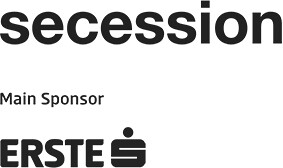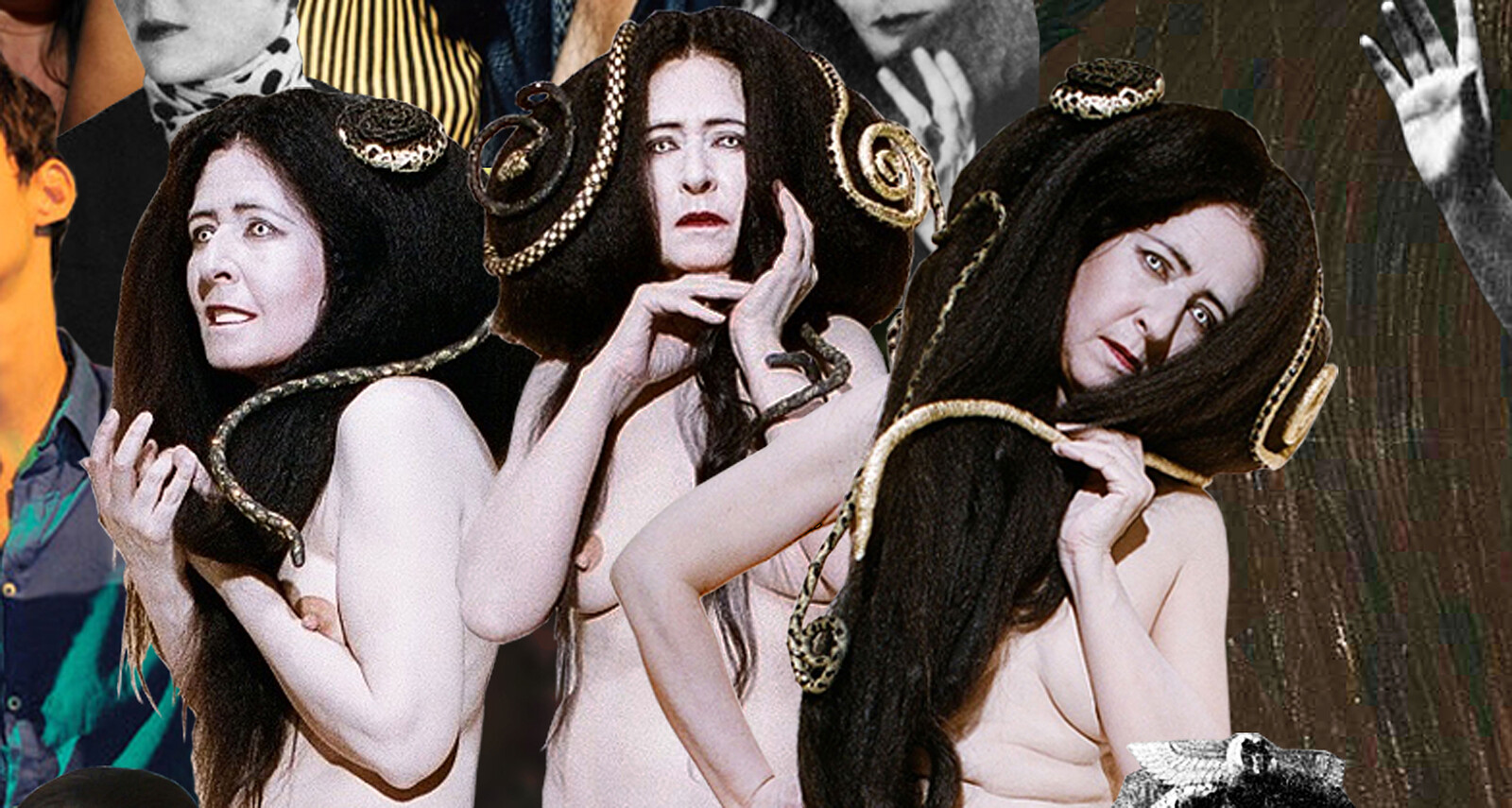František Lesák: Supposition and Reality
Karimah Ashadu: Plateau
July 2–September 5, 2021
Friedrichstraße 12
1010 Vienna
Austria
Hours: Tuesday–Sunday 10am–6pm
T +43 1 587530710
F +43 1 587530734
presse@secession.at
Dominique Gonzalez-Foerster
VOLCANIC EXCURSION (A VISION)
This is how it all started: “…woke up in the middle of the night and had a vision.
we were close to a small volcano with a gentle lava flow, the vegetation was tropical,
there were hummingbirds and llamas … my body was multiplied in several apparitions …
surrounded by inspiring friends, humans and non-humans, from now and earlier times.
it was a beautiful, joyful, almost operatic crowd, like a march, a protest, an excursion …
thyphoeus from the beethoven frieze was also there and the three gorgons …”
—Dominique Gonzalez-Foerster
For Dominique Gonzalez-Foerster, making art is a tentative and experimental process that becomes a kind of personal learning experience. Her practice became visible in the 1990s with a series of “chambres” and environments, but soon branched out into other media.
Her exhibitions are often site-specific productions in which she engages with distinctive features of the venue and its history, weaving in literary references. Objects feature in subsidiary roles, as props that let her establish a particular atmosphere, rather than as ends in themselves and definitive creative output. Evolving narratives await discovery by the beholder who takes the time to pick up on the clues hidden in the fragmentary set pieces, photographs, peculiar interior arrangements, and personal details. Transporting the visitors to fictional scenarios from the past and future, her environments are the scenes of distinctive experiences in which yearnings, utopian wishes, fears, and dreams come to life.
For her exhibition at the Secession, titled VOLCANIC EXCURSION (A VISION), she has conceived an environment that addresses the specific site while also reflecting on the extraordinary time of a global pandemic. Invoking role models from the past and the present, friends and colleagues who share her ideas, Gonzalez-Foerster counters the fissures that have come to mar the social fabric with a tableau exuding strength and confidence, optimism and courage.
Dominique Gonzalez-Foerster was born in Strasbourg in 1965 and lives and works in Paris.
František Lesák
Supposition and Reality
The conceptual draftsman and sculptor František Lesák’s work is dedicated to describing and understanding the world of objects and associated questions of perception. Creating systems of spatial reference, exploring alternating perspectives, surveying and mapping selected sceneries, and toying with shifts of scale are key elements of his creative toolset. Undertaking a kind of basic research, systematically planned cycles of works examine things and their relation to the real space around them as well as the space of media.
At the Secession, Lesák presents several bodies of work, mostly dating from the past few years, that have not or only rarely been on public display. For the new cycle Vermutung und Wirklichkeit (Supposition and Reality, 2020), from which the show takes its title, he implements a rigorous experimental setup, drawing his left hand in different positions in order to probe the complex interplay between tactile and visual perception, but also scrutinizing drawing itself as a physical and mental practice that yields notations of reality.
Another major theme in Lesák’s oeuvre is the multiplicity of aspects that an object presents to the viewer. Striving to record all its dimensions, he devotes himself to classics of art history as well as the representation of motifs he finds in nature such as a formation of erratic granite boulders. His comprehensive study of the nexus between the mind’s apperception of the world and its description ultimately gestures toward the looming question of the nature of reality itself.
František Lesák was born in Prague in 1943 and lives and works in Vienna and Neu-Nagelberg, Lower Austria.
Karimah Ashadu
Plateau
Karimah Ashadu’s practice examines conditions of living and working in the socioeconomic context of West Africa. The filmmaker and visual artist’s new film Plateau, which premieres at the Secession, follows undocumented workers mining for tin and columbite on the Jos Plateau in central Nigeria. The rugged landscape is dotted with manmade craters and ponds—traces of the exploitation of its resources that goes back to the colonial era. Unlike earlier generations of laborers, who were forced to seek employment and surrender the riches they extracted to the colonial masters, today’s workers are self-employed. Buoyed by hopes of striking it rich, they accept the hazardous working conditions and heavy physical labor, digging through their land a second time in search of the minerals.
Without moralizing, Ashadu brings into focus the beauty in the everyday and people’s self-reliance and struggle for emancipation. The workers’ own voices narrate, giving insight into their lives as the artist harnesses her unconventional cinematographic practice to chart the space between herself, the camera, and the bodies it records. Ashadu’s approach to filmmaking is grounded in observation, submitting to the anatomy of motion in order to unlock novel perspectives. Her meandering gaze engages with the mineworkers’ bodies, their hands and feet digging in the sludge, but also lingering on the rich colors of the landscape, its luminous tones of russet and ocher yellow.
Karimah Ashadu was born in London in 1985 and lives and works in Hamburg und Lagos.
The exhibition program is conceived by the board of the Secession.



